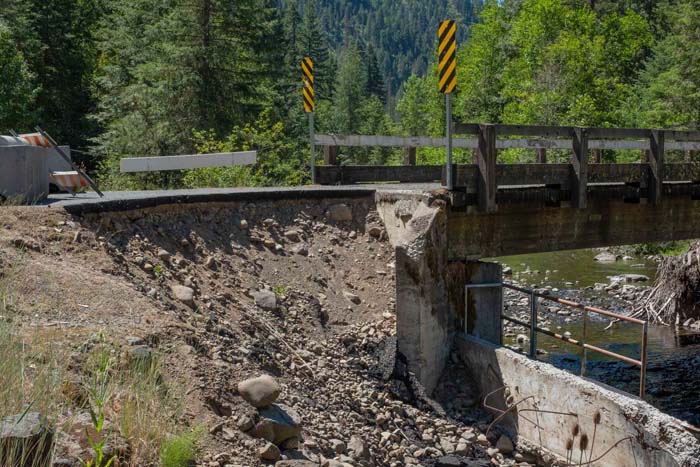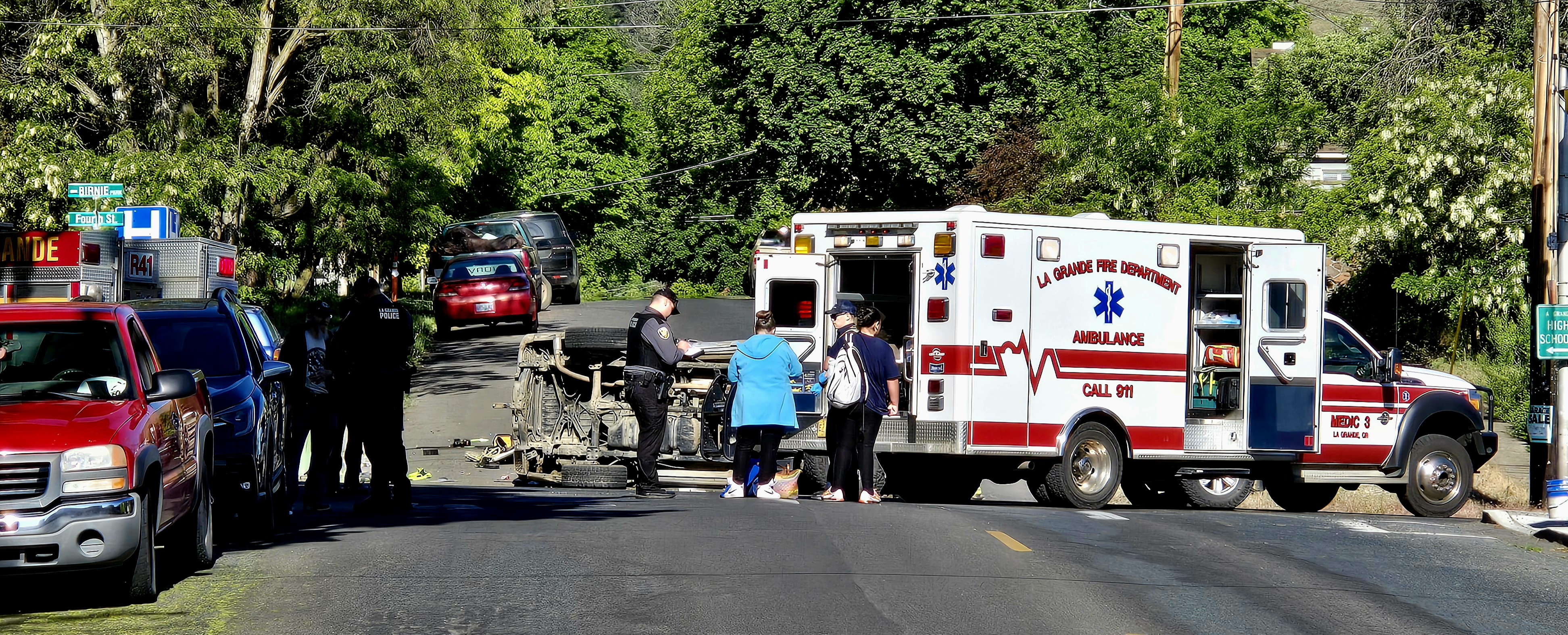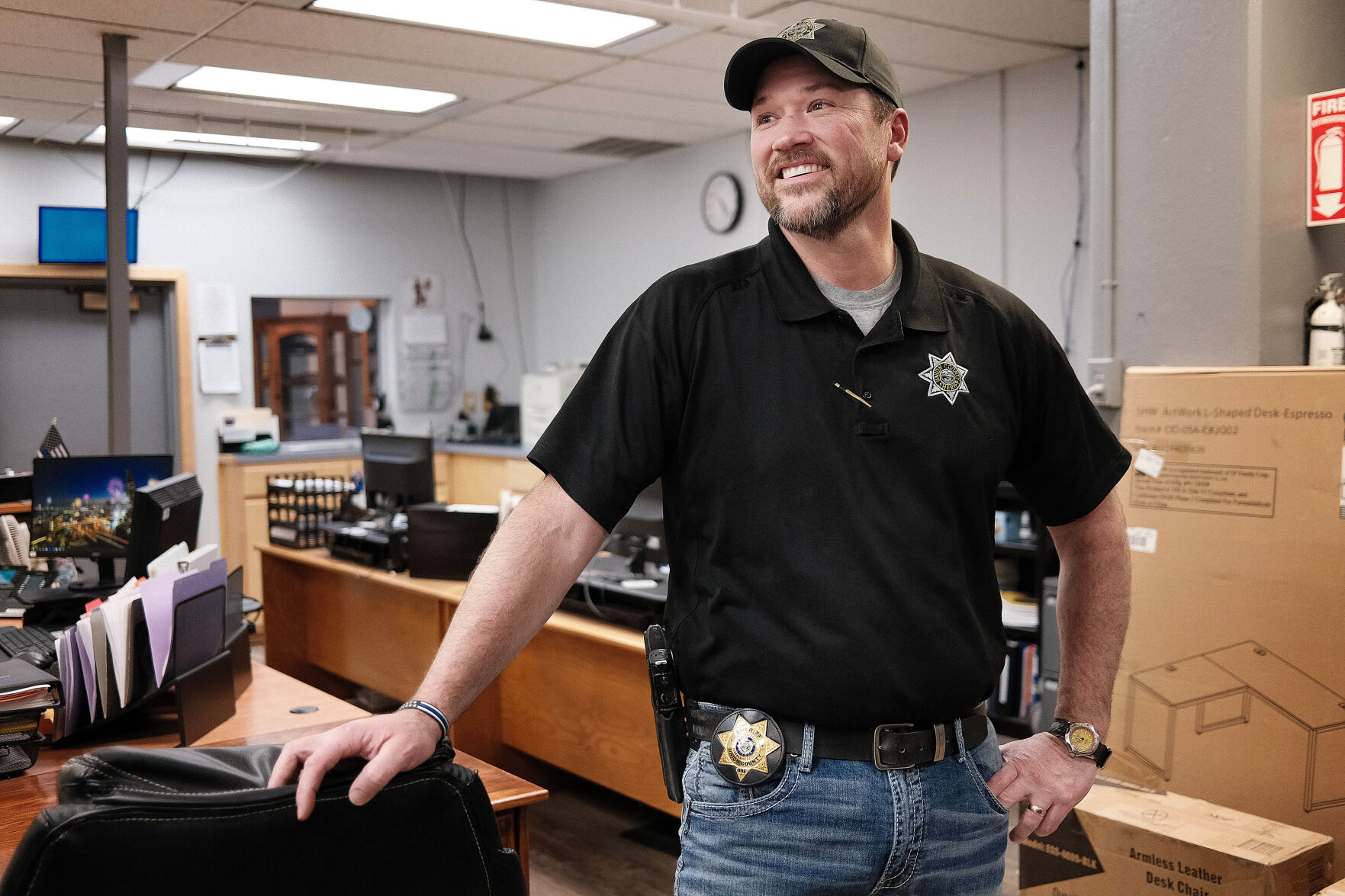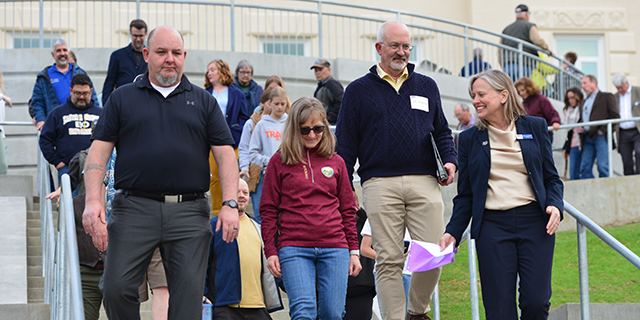Three years after major flooding, residents still waiting on new Thorn Hollow Bridge
Published 12:00 pm Thursday, July 20, 2023

- The Forest Road 32 bridge remains shut down Tuesday, July 18, 2023, in the Umatilla National Forest up the road from Bar M Ranch near Umatilla North Fork Trailhead. The bridge was closed after being damaged during the floods of February 2020. Residents are unable to access the bridge, which leads to Interstate 84.
PENDLETON — In a valley of fire and water, Thorn Hollow Bridge on Cayuse Road on the Umatilla Indian Reservation has been out of commission for more than three years.
County and state officials in March 2021 estimated construction of the new bridge could commence in 2023. The bridge is a crucial artery that connects communities, and residents who relied on the bridge are feeling frustration.
The bridge spanned the Umatilla River about 10 miles southeast of Adams. The record-breaking floods of February 2020 rendering the bridge inoperable. Being in an area susceptible to floods and fires, this is not just a concern about longer commutes — it is a concern regarding safety, said Rob Myers of Bar M Ranch.
“It’s vital,” he said.
It may be on the reservation, but the road and bridge belong to Umatilla County. The county removed the defunct bridge but has yet to replace it.
Not only is Thorn Hollow Bridge nonexistent, but farther up the valley on Forest Service Road 32 there is another decommissioned bridge that is supposed to lead to Interstate 84. The floods of February 2020 damaged that bridge as well.
Between the two impassable bridges, the residents of Thorn Hollow Valley have only one way in and one way out. Myers said if there is a flood or fire that cuts off the route, people are going to be trapped.
The winters are especially troublesome, he said, for two reasons. The road closures prevent snowplows from going all the way through to be able to clear the roads for residents in a timely manner, and those on the north side of the Thorn Hollow Bridge are forced to drive on a steep hill in poor road conditions, regardless of the plowing.
Jordan Tyer, of Thorn Hollow Valley, said depending on which side of the bridge you are on and where a particular service is coming from — snowplows, school buses, emergency vehicles — the time it takes to traverse the valley has practically doubled.
“It is a public safety issue,” he said, but he also acknowledged this is “a multifaceted issue involving a lot of bureaucratic red tape.”
Patty Perry, senior planner and planning program manager of the Confederated Tribes of the Umatilla Indian Reservation’s Public Works Department, said staff have been working on permitting, and Umatilla County and La Grande-based Anderson Perry & Associates have been working on the plans for the bridge.
Another resident of Thorn Hollow, Gail Hogge, said, “I get that things take time, but there has just been a lack of information.”
Hogge said her concern was accentuated when there was a recent fire down Cayuse Road. If the wind would have blown in a different direction, everyone up the valley would have been stuck.
“When I reach out to different agencies there’s just confusion,” she said.
Hogge mentioned she has been in contact with various jurisdictions — federal, state, tribal and county — to figure out what is going on. She said people have been polite but not clear on duties, expectations, responsibilities and polices.
“I just hope this is figured out and solved before a big emergency,” she said.
Dan Dorran, chair of the Umatilla County Board of Commissioners, said the county and Anderson Perry have about 95% of the plans complete.
“We are on an expedited process, but typically new bridges take the state of Oregon seven to nine years,” he said.
Dorran said funding is not an issue. The project was fully funded within nine months, but environmental, historical, archaeological and federal regulations have made replacing Thorn Hollow Bridge a lenghthy process.
The county, Dorran said, is waiting on the Bureau of Indian Affairs and CTUIR for permitting and right-of-way issues. Building the bridge requires a strip of land from the neighboring fish facility and at least two construction easements.
After that, the next step is to advertise for a contractor and the construction of the project, he said.
Another factor that has to be considered, he said, is the narrow, seasonal window for working in the river because of the fish.
The county’s goal, if everything works out perfectly, Dorran said, is to have a new bridge up and usable in the fall of 2024. However, further delays could push it back into late 2025.
Back in 2021, the original schedule to replace the bridge was up to seven years at a cost of around $5 million. If the county is able to get in a new bridge by 2025, that still would beat the seven-year projection.





